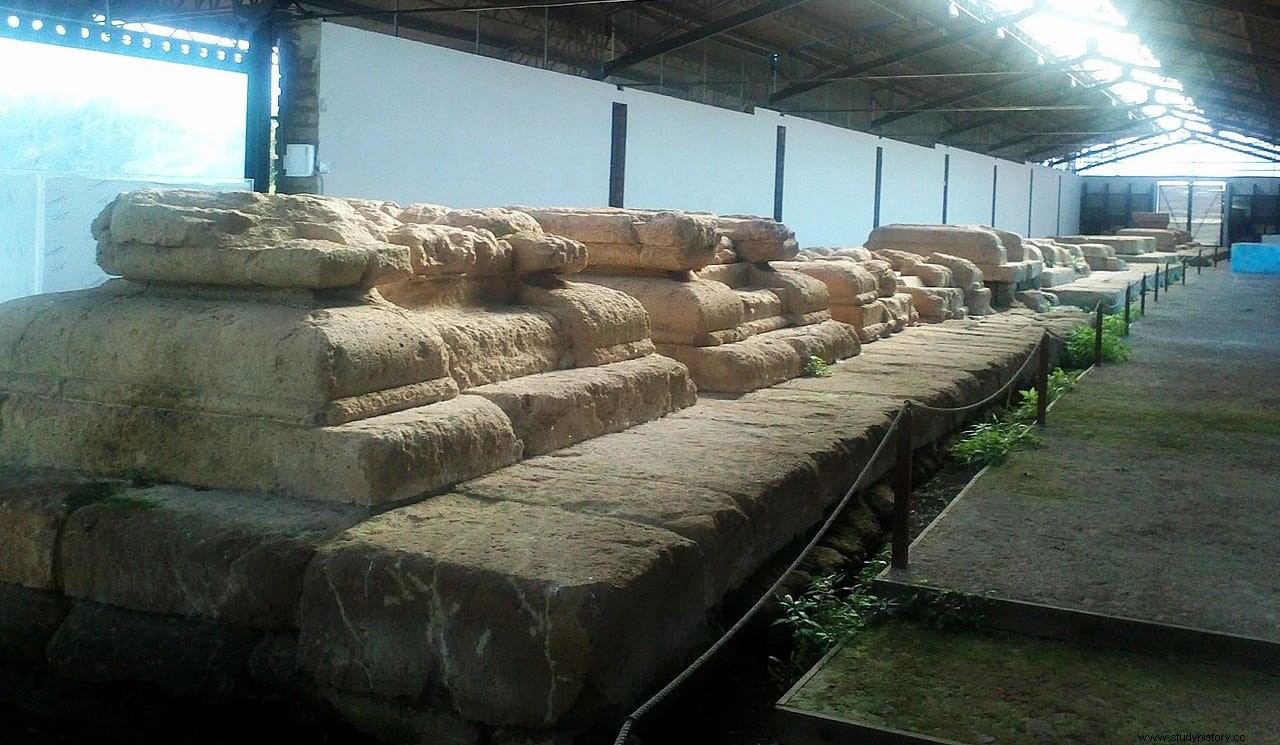The archaeological area of the ancient city of Lavinio, where the Heroon of Aeneas is located, opened to the public for the first time on January 7th.
The site with the remains of Lavinio is located in the town of Pratica di Mare, about 53 kilometers south of Rome. According to Roman mythology, this port city was founded by the Trojan hero Aeneas, who named it after his wife Lavinia.
However, the evidence shows that its origin dates back to the 12th century BC, during the Bronze Age, reaching its maximum expansion in the 6th century BC
The site was excavated in 1955 by the topographer Ferdinando Castagnoli and the archaeologist Lucos Cozza from the University of La Sapienza, who found a burial mound 18 meters in diameter in which there were more than 60 objects dating from the seventh century BC
Among these objects were a chariot, weapons, jewelry, and ceremonial vessels used in funerary rituals. The burial mound had been modified in the 4th century BC. adding a square room closed by a large tuff stone door.
The ancient Romans called this burial mound the Heroon of Aeneas . A heroon is a sanctuary that both Greeks and Romans dedicated to the figure of a hero to worship him, and that was built on his supposed tomb or place where his remains were thought to rest.
The Greek historian Dionysius of Halicarnassus, who lived between 60 B.C. and 7 A.D., he wrote about the heroon of Lavinius that
The oldest source citing the founding of Lavinium by Aeneas is Quintus Fabius Pictor, a Roman senator and historian who wrote in Greek and was despised by his contemporaries as an analyst . It is precisely with the arrival of Aeneas that he begins his account, which today is only preserved in the citations of other later authors such as Polybius or Titus Livy. That's where Virgil took the story, to make it immortal in his Aeneid .
The fact is that subsequent excavations found in the place a sanctuary composed of 13 aligned altars, plus a fourteenth recently discovered. They all date from between the 6th and 4th centuries BC. The explanation of the archaeologists is that Lavinio must have been the main religious center of Lazio at that time, and that each of the altars represents one of the most important cities of the Latin League.

The League was made up of about 30 towns and villages, initially led by Alba Longa. But soon Rome took control and used them for its own defense.
The site also contains the remains of an ancient temple to Minerva and two kilns that were used to make terracotta votive figurines.
In the 5th century BC The decline of the city began, possibly badly damaged by an earthquake, and by the 2nd century B.C. it no longer possessed its former importance as a religious center, while being overshadowed by the expansion of its daughter Rome.
During the Middle Ages, around the year 1200, the current city of Pratica di Mare was built on the acropolis of Lavinio, whose property was passed from some families of the Roman nobility to others, until finally remaining in the hands of the Borghese, who it still belongs today, and without whose authorization archaeological excavations cannot be carried out.
This has been the main reason why the public visit has had to wait more than 50 years to become a reality. This is a unique opportunity, which anyone visiting the area should not miss, to see an important Latin site before Rome was Rome.
